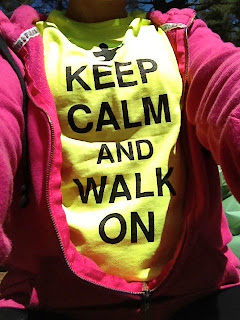The first text I want to relate my social justice event to is Alan Johnson's article, "Privilege, Power, and Difference." Johnson discusses the issues of difference we face in society, and how people are affected by these issues. I know Johnson brought up gender, race, sexual orientation, and social class, but I figured I could incorporate autism in their somehow. "We don't need to love one other, or even like one other, to just work together or just share space in the world." This quote by Johnson expresses so many different, powerful, emotions that I can't even put into my own words. So many people in this world are judgmental towards others because of their color, or sexual orientation, but this is the same for people with mental disorders or special disabilities. At the Imagine Walk, everyone their was supporting the cause, and many had some form of Autism, and it was just so awesome to see how proud they were to be part of a function where they can be themselves. One of the best moments was when a senior from North Kingston High School went on stage to sing the National Anthem in front of the crowd. This young man had his school behind him, and they led the walk for raising the largest amount of money as a team. At this event everything seemed perfect, with happy faces everywhere, but unfortunately we all know it isn't like this everyday for people with autism. They still face issues because they have a little mental disorder, and some people will never accept them as normal because of having autism.
This walk also made me think about Christopher Kliewer's piece, "Citizenship in School: Reconceptualizing Down Syndrome." Even though down syndrome and autism are completely different, sometimes people misunderstand their meanings. Down syndrome is a genetic disorder created by an extra chromosome which leads to mental retardation, and lifelong developmental problems. Autism is a neurological disorder that affects the normal functioning of the brain impacting the areas of social interaction and communication. Kliewer's chapter discusses how students with down syndrome should be able to attend a normal classroom, and be around all their classmates, not just ones with disabilities. People with autism need to be surrounded by their own peers and feel comfortable around people, so they can improve their low communication skills. Being in an abandoned classroom in the basement of a school is shutting students with disorders out, which is punishment. From being at the Imagine Walk, I thought to myself if I were to have a child with a disability I would do anything for him or her to know they are a normal kid, and that they can do whatever they wish, just the challenges they face could be more difficult.
For the last connection I decided to talk about Bob Herbert's article, "Separate but Equal," in relations to the Brown v. Board of Education case. As we all know the Brown v. Board of Education reflects on the segregation in schools during the 1950's. This ties into the issues with racism, and how people are treated poorly because they look different, or come from a different class. For students with autism are they separated from regular classes, and if so are they treated the same by both teachers and classmates? In my mind no matter what the circumstances are I do not believe separate will ever be equal, especially when involving education. The autism benefit raises money so students can go to school and teachers have the training they need so everyone can learn sufficiently. Any student should be able to attend a normal classroom no matter what disorder they may have. The teacher is responsible for finding the right strategy to approach the class in a convenient way the everyone can learn from. This way no students are left out because of a learning disorder, and this benefits everyone; parents, students, teachers, committees, etc.



I really enjoyed reading this blog post Megan. I wish that I had been able to participate in the Imagine Walk this year. I participated a few years ago as a part of a support group for young adults with Asperger's and High-Functioning Autism. I also believe that children with Autism should be allowed to learn in normal classrooms. Interacting with children who don't have Autism can do a world of good for a child with Autism.
ReplyDeleteFirst of all, I adore those shirts! I really liked your blog post. Autism research is a cause that I support frequently. The benefits of children being able to go to a summer camp (with inclusion) is so great for them. I did my senior project on autism in high school, and I learned there are more and more children every year being born with some type of ASD. 1 in 110 children, and one in 77 boys, I think were the stats when I did it.
ReplyDelete